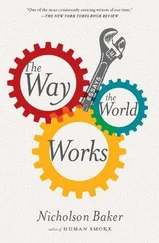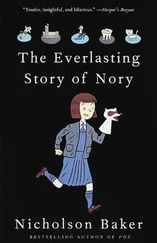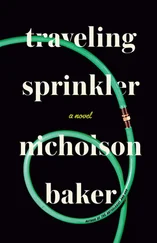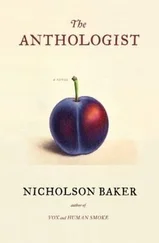Traditional silver-grained emulsions held up better than that, at least — or did they? Word was getting around that certain species of fungi 20found nourishment in the film’s soft (and easily scratched 21) gelatin. In his 1978 article, Carl Spaulding wrote that “the extreme susceptibility 22of silver film to severe damage from water or high humidity is a major concern of micrographics professionals — although relatively unknown to most librarians.” Librarians are more aware of the problem now: in 1991, a check of master negatives 23at the University of Florida’s P. K. Yonge Library of Florida History (whose microfilm collection includes “the only extant copy of many Florida newspapers”) found that more than half had fungal troubles.
More ill news arrived from the Public Archives of Canada in 1981; a small study there determined that thirty-five percent of a sample of rolls of silver microfilm had “redox blemishes”; five percent of these “revealed a loss of information.” In 1988, a group of scientists at the Image Permanence Institute in Rochester, New York, wrote that “there seems to be a much wider 24scale ‘redox blemish’ problem in library and archive microfilm collections than is generally believed”; more than twenty percent of the half-million rolls in the Illinois State Archives were affected, for example. And there remained the chronic problems with residual hypo — leftover image-fixing chemicals that weren’t rinsed away during the processing of the print or the master. Verner Clapp had himself written about the fading caused by unwashed hypo in a squirmy 1954 Library Journal piece called “Are Your Microfilms Deteriorating Acceptably?” The original draft 25of the article, preserved in Clapp’s papers, has the following passage, cut from the published version: “It is horrifying to calculate what the cost of testing, handling, and possible rewashing will be if applied to the entire LC collection of microfilm, now amounting to approximately 100,000 reels. Yet this precaution is indicated.”
As a result of Clapp’s article, the Library of Congress began a small-scale program of sampling bought microfilm, mostly of newspapers, for “excessive residual hypo, 26and other defects related to definition or legibility.” Between 1972 and 1976 the evaluators rejected, on average, half of the items tested — a “shocking statistic,” according to the chief of the Library of Congress’s Order Division in that period. Yet so eager were the library’s managers to reduce the size of the newspaper collection that “in more than 50 percent 27of these cases the film rejected by the laboratory is not returned to the vendor but is accepted for addition to the collections”—which is to say that the library knowingly accepted film that wasn’t good in order to replace original newsprint that was. And the laboratory’s sample during this period was only 0.7 percent of the library’s incoming spoolage; the rest passed through unexamined. (Turning disbound pages under a camera day after day is a tedious, trance-inducing job, 28but checking each frame for mistakes is even worse.)
Microfilm is, Allen Veaner has written, the “invisible product.” 29Librarians file it away unlooked-at, or do a few spot checks, hoping the images it holds are all okay. “Serious defects,” 30writes Veaner, “often do not show up until months or years later (when an angry faculty member or student complains of an illegible or missing page, or when images have faded owing to faulty processing).” For one research project, Shawn Godwin was hired by Old World Wisconsin, a living-history museum, to look at every page of all the newspapers published in Grant County, Wisconsin, between the eighteen-fifties and the nineteen-fifties. Most of the papers were available only on old microfilm; Godwin’s task was to find references in them to a certain small African-American community. Some of film was fine, but some of it was not: “Entire years were improperly microfilmed and virtually illegible,” he wrote me.
There is nothing more frustrating than to be trying to reconstruct a specific event, to know it is in the paper, to have references to an article and then to stare and strain at poor quality microfilm and finally acknowledge that what you are looking for is there in name but lost in substance, gone forever into the maw of time.
Nancy Kraft, a librarian at the State Historical Society of Iowa, estimates that about one third of her library’s reels 31of pre-1960 microfilm of Iowa newspapers (seven thousand reels, 8.4 million pages) “represent files that will have to be refilmed”—and many can’t be refilmed, she says, because there is no original file left to work from.
When the NEH began paying for mass-microfilming projects in the early eighties, they compelled some improvements in standards; 32and microfilm labs such as Preservation Resources and the Northeast Document Conservation Center can do fine work. Nevertheless, serious mistakes still occur. Nicholas Noyes, director of the Maine State Historical Society’s library, told me that in one recent outsourced job the company failed to film an entire year’s worth of newspaper issues. Fortunately his library’s policy is to save its originals: the year isn’t lost forever. Steve Dalton, who moderates the Northeast Document Conservation Center’s popular “School for Scanning” conference, said in 1998 that one of the benefits of microfilming over digital scanning is that microfilmers have had time to learn from their mistakes: “I like to think that after these years and years of experience, we have learned how to do it well.” But he added, “I must also admit there is still a ton of really poor quality microfilm that’s produced — hopefully not here at NEDCC, but it is produced nonetheless.” Dennis Hardin, who runs the microfilming lab at the Indiana Historical Society, told me, “I think there’s a lot of film out there that we wouldn’t put our names on with a ten-foot pole.”
The fading problem is the most serious one, in my own experience. Recently, I tried to read the microfilm of a 1914 issue of Foster’s Weekly Democrat & Dover Enquirer, published in Dover, New Hampshire. There were whole pages on which little more than the headlines was legible. I was able to read:
NORTHAM COLONISTS 33
HOLD MEETING
Two Interesting Papers Read
at January Session
And then, below it, there was a column of nothing. No originals of this paper survive, as far as I know: the New Hampshire State Library and the Dover Public Library threw theirs away. The new head librarian in Dover conceded that she’s been frustrated at times, looking up a particular article on her library’s film and finding that “you just can’t read it.” On the other hand, as she pointed out, there’s more space in the library. “It’s so wonderful to have a hundred and fifty years of newspapers in a cabinet,” she said.
CHAPTER 5. The Ace Comb Effect
Setting aside the joys and sorrows of the paperless reading experience, and setting aside microfilm’s inability to do justice to color printing and halftone photographs, and setting aside the technical troubles with deteriorating emulsions and plastic substrates, one may ask a more basic question: Are the words the same? That is, is the microfilm with which the Library of Congress replaced its copy of the World-Telegram, say — whether or not it is adequately photographed or physically durable or experientially equivalent — is it, at the very least, a faithful reproduction of what preservation administrators like to call the “intellectual content” of the paper originals? Does microfilm successfully capture the text of the thing it locally replaces? No, often it doesn’t, because big-city papers published five or ten or more editions (or “replates”) throughout a given day, and most libraries simply bound whichever ones they happened to be sent.
Читать дальше












